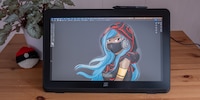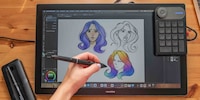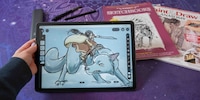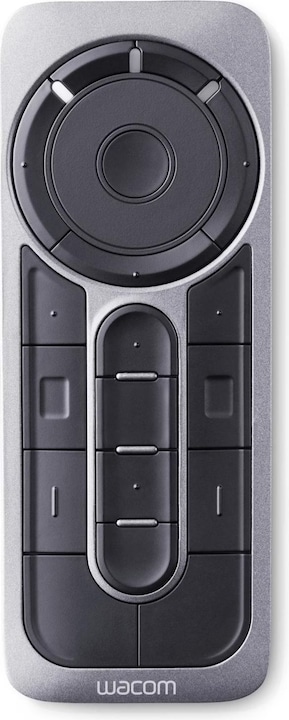
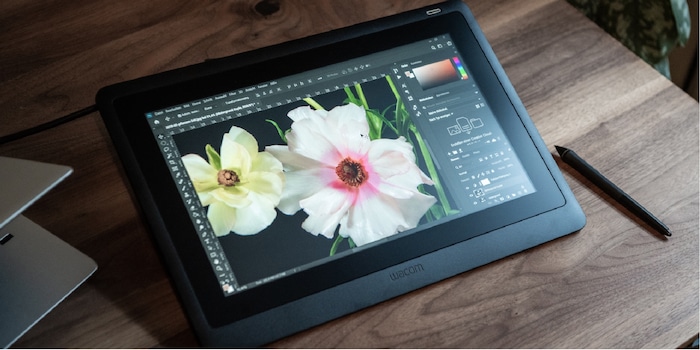
Wacom Cintiq 16 and 22 tested: creative pen displays in the everyday life of a photographer
Graphics tablets or pen displays, as Wacom calls the Cintiq 16 and the Cintiq 22, are tools for professionals and that's why I'm not doing the test myself, but giving the two to the Hamburg photographer Katrin Saalfrank so that she can use them at work.
Optically, the Cintiq 16 and Cintiq 22 look like siblings of different sizes. However, there are more differences than just the size, but the resolution of the integrated screens is not one of them.
Uncomplicated setup and quick set-up
Katrin looks at me a little shocked when I bring her the two Wacom tablets: "Is that a TV?" I was also surprised by the size of the Cintiq 22 box. But with a display size of 22 inches, the packaging is more like a monitor or small television than a notebook. The difference in weight is also greater than the six-inch difference in size would suggest. The small model weighs 1.9 kilograms without the stand, while the large Cintiq comes in at 5.6 kilograms.
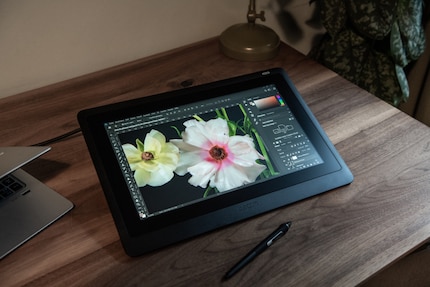
The Cintiq 22 comes with a stand (another reason why the box is so big), which you have to buy in addition to the Cintiq 16. Katrin reports that this is "super stable" when I pick up the two graphics tablets again: "It's easy to handle and everyone can set the best working angle." It's also practical to be able to set different angles for longer retouching jobs to relieve strain on the neck.
The Cintiq 16 is also stable on its short fold-out feet, Katrin tells me, but only at one angle. The small graphics tablet is not particularly flexible. "I tried to move it a few centimetres and one foot immediately folded in. You have to hold it and lift it up to move it."
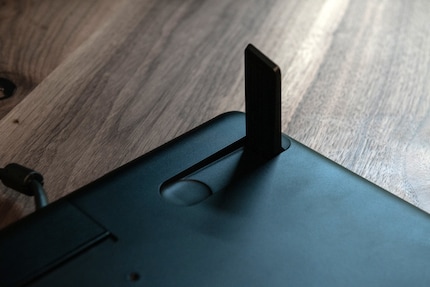
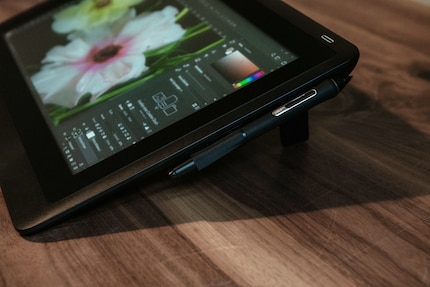
The setup is straightforward. However, there are differences in the cables supplied. Wacom includes an HDMI, USB and power cable with the Cintiq 22. In the Cintiq 16 box, on the other hand, you will find a proprietary 3-in-1 connection that combines HDMI, USB and power transmission in one cable. Katrin was able to install the drivers and software straight away. If you have already worked with other Wacom tablets, you won't have to get used to it. The menu navigation and the settings for the pen and tablet are the same as for other Wacom models.
Even before starting to work with the pen displays, Katrin notices the wide frames around the screens: "It doesn't exactly look modern and doesn't correspond to what I'm used to from other technical devices these days. The wide borders are not necessary for use, but fortunately they don't get in the way either."
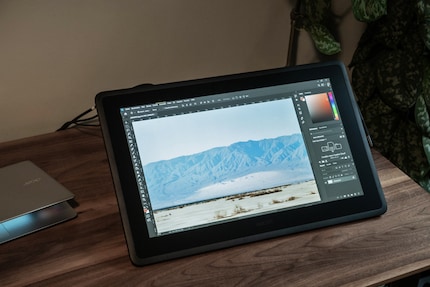
Early enthusiasm flattens out
Katrin has been employing Wacom pen tablets for years. What's new for her with the Cintiq 16 and 22 is that she can see the image she's working on directly on the tablet. She likes it straight away: "First impression TOP, that's what I always want from now on!" However, her workflow, which she has been using for years, comes to a standstill. The two Cintiqs cannot be used as fully automatic touch displays.
"I'm used to working with a pen tablet and a keyboard for shortcuts. Even the small Cintiq is so big that the keyboard is far away and can no longer be integrated into the workflow." Although she can also call up the tools and other customisations in the menu with the pen, this takes much longer than with the keyboard shortcuts. As a small keyboard replacement, Wacom offers an "Express Key" remote control with 17 buttons that can be assigned commands.

Apart from the keyboard being further away, Katrin was able to work flawlessly with the Cintiq 16 and Cintiq 22. With 8192 pressure levels, the pen has a high level of accuracy and is still comfortable to hold even after hours of use. However, it briefly lost the connection a few times and did not respond. After a few seconds, however, the connection was always re-established by itself.
Both Cintiqs have the same resolution of 1920×1080 pixels. With the 16-inch model, this is still sufficient for working, but Katrin would still like a higher resolution: "For 1000 euros, I now expect at least WQHD." In addition, the colours appear pale and it was still necessary to look at the calibrated monitor to check them. For their part, the Cintiq 16 and 22 can be calibrated with theWacom Color Manager and other devices can be calibrated, but Wacom's customer service told Katrin that the colours on the simpler Cintiq models are of course not as accurate as they are on the Pro models. And neither are the Cintiq 16 and 22. "A reference monitor is therefore necessary for the simple models either way."
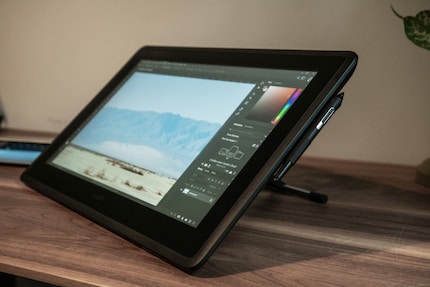
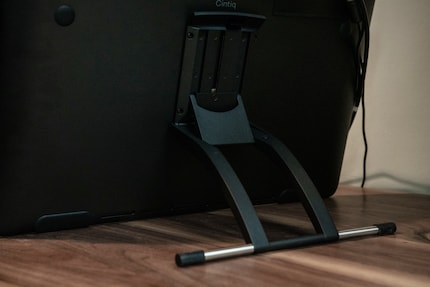
Conclusion: Good tools, but not for the photographer
But even without true-colour rendering on the pen displays, Katrin enjoys her employees with the Wacom Citinq 16 and Citinq 22, as she can retouch directly on the image. The announcement that she would never go back to a conventional pen tablet - similar to the switch from mouse to pen tablet - never materialises. Katrin really doesn't want to go back to the mouse, but has no problem returning to her graphics tablet without a display: "Image editing is much more time-consuming without a keyboard and shortcuts or the Express Key remote control." That might still be possible with the Cintiq 16, but definitely not with the Cintiq 22.
Further costs would also be incurred for the "Express Key" remote control and the calibration device. "With the large Cintiq 22 costing just under 1000 euros without the accessories, as a photographer I would rather go for a good monitor and the tried-and-tested pen tablet."
9 people like this article
When I was but a young student, I'd sit in my friend's living room with all my classmates and play on his SuperNES. Since then I've had the opportunity to test out all the newest technology for you. I've done reviews at Curved, Computer Bild and Netzwelt, and have now arrived at Galaxus.de.


